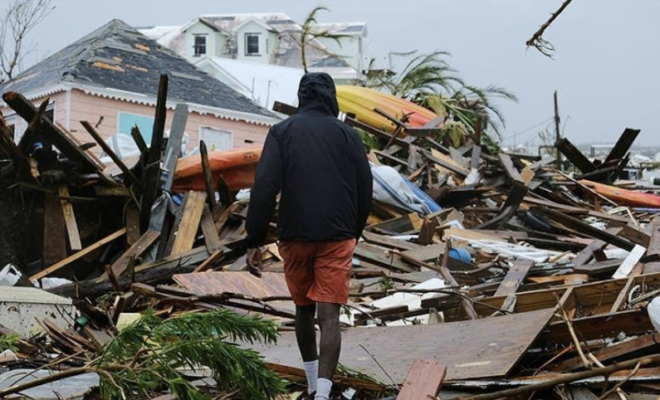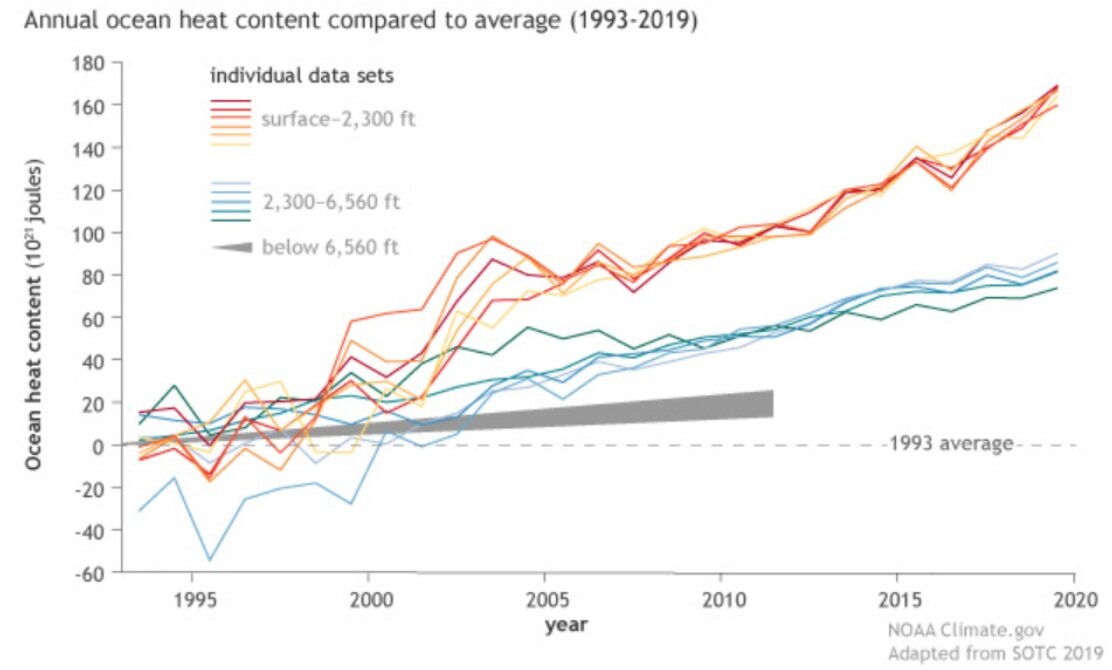We know it’s happening, but why so much conversation about climate change, and what does it mean for Eleuthera? You’ve probably noticed that the North Atlantic hurricane season has gotten considerably more intense since 2016. After Hurricane Matthew, there has been at least one Major Hurricane (categories 3 – 5) almost every year in The Bahamas. The proportion of Major Hurricanes in the Atlantic Hurricane Season will continue to increase because of climate change, a new area of research at The Island School’s Cape Eleuthera Institute (CEI).
Climate change is a difference in long-term global atmospheric conditions. According to earlier studies, the Earth’s climate goes through natural changes every few thousand years. Ice Ages in tropical climates were recorded and investigated in the earlier geologic record. Climate change is a direct result of global warming. Global warming is affected by greenhouse gases, such as Carbon Dioxide, Methane and Nitrous Oxide, acting as a blanket over the Earth used to trap heat in our atmosphere. The greenhouse effect is imperative for maintaining life on this planet as greenhouse gases trap heat from the Earth and re-radiate back to Earth. With this process, some of the trapped heat should escape to outer space. As more gas emissions collect in the atmosphere, more heat is trapped in the greenhouse blanket and radiated back on Earth rather than back to outer space. As a result, global temperatures increase.
Marsh Harbour, Abaco, Bahamas Post Dorian [Dante Carrer/Reuters]
With the rise in global temperatures, Bahamians can expect pivotal changes in our physical and social environments. Our oceans and fisheries are changing because as air temperatures increase, sea surface and ocean temperatures also rise. The ocean also is a sink for carbon emissions, making it more acidic as well as hot. As a result of these changes, marine life suffers: more corals are bleaching due to heat increases, and crustaceans and shellfish are affected by the acidity change of their environment. Many of us in the islands have begun to notice these changes linked to climate change. There are also instances where aquatic animals move to cooler regions with the increased temperatures or die from the heat and lack of oxygen. Additionally, with the ocean temperatures rising, the ocean’s layers also become more fixed, affecting how nutrients travel to and from different ocean basins and changing weather patterns at the surface.
With hotter oceans and air come hotter nights and longer summers on all Caribbean land. This phenomenon is already happening and will continue into the end of the century if left unchecked. With more moisture in the atmosphere due to higher evaporation rates, we expect more droughts, more intense precipitation and more extreme hurricane formation in the Caribbean. With increasing temperatures, we expect detrimental effects on human health (more heat strokes, random diseases, etc.) and economic stability (less tourism). Sadly, we cannot stop climate change. With emissions already in the atmosphere, the goal of climate scientists now is not to reverse the increase of greenhouse gases but to slow down the change in climate by limiting the number of emissions released into the atmosphere. At CEI, we study changes in large-scale environmental factors, such as sea surface temperature, that affect hurricane formation and future development.
Annual ocean heat content compared to the 1993 average from 1993-2019, based on multiple data sets: surface to depths of 700 meters (2,300 feet) in shades of red, orange, and yellow; from 700-2,000 meters (6,650 feet) in shades of green and blue; and below 6,650 feet (2,000 meters) as a gray wedge. Graph by NOAA Climate.gov, adapted from Figure 3.6 in State of the Climate in 2019. See original figure for details about data sources and uncertainty. (https://www.climate.gov/news-features/understanding-climate/climate-change-ocean-heat-content)
While we can’t stop climate change altogether, we can decrease our emission outputs to slow it down. Mitigation efforts work when people can live in a world that is more sustainable and adaptable, according to the Intergovernmental Panel on Climate Change (IPCC) Sixth Assessment Report (AR6) Shared Socioeconomic Pathway 1 (SSP1). Attaining a sustainable world would be a global and national effort to mitigate and adapt to the changing climate. So what does a more sustainable world look like for The Bahamas? According to SSP1, that calls for more land conservation and introducing environmentally inclusive development while pushing for greener technologies and renewable energy. We also invest in education and health as the world’s resources are more commonly shared. With environmental policy kept in mind, the economic policy focuses more on human wellness and inequality is addressed within and across nations.
Image by Lorenzo Gritti, adapted from The New York Times
For Bahamians, that could mean following and helping with conservation efforts, cleaning beaches to stop plastic pollution, reducing plastic consumption and finding more green alternatives. It means challenging our individual and collective consumption and carbon footprint. It may require putting more effort into shopping and manufacturing local and sustainable products. In adaptation efforts, we must become more creative and resilient with architecture and building. It also requires constant mindfulness that extreme weather conditions are likely and to increase education on this. It will take collective global, national and community efforts to mitigate emissions and to adapt to the new challenges that we will face under climate change.
For more information, please read the brief on climate change and The Bahamas (here) published by CEI in partnership with the University of The Bahamas Climate Change Adaptation & Resilience Research Centre (CCARR).
By Marjahn Finlayson
Research Scientist

![Marsh Harbour, Abaco, Bahamas Post Dorian [Dante Carrer/Reuters]](https://islandschool.org/wp-content/uploads/2022/01/Screen%20Shot%202021-07-23%20at%203.53.27%20PM.png)

